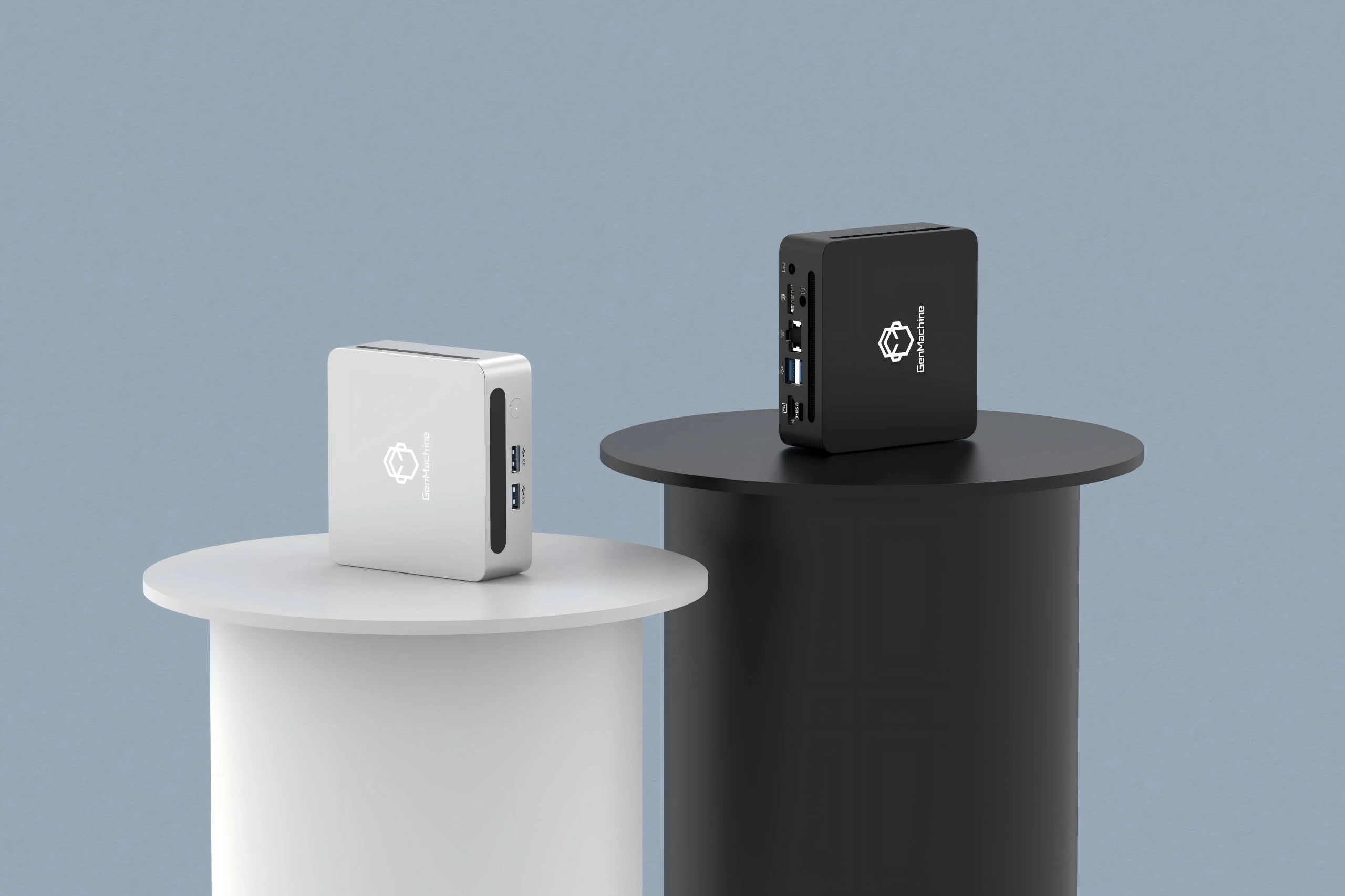In today’s digital age, amd mini PCs have gained considerable popularity among users due to their compact and portable form factor and powerful performance. Mini-PCs demonstrate unique advantages for home entertainment, office applications, or any professional, industry-specific computing needs. Since the introduction of amd mini PCs, cooling technology has been a key factor in performance and user experience. Let’s take a look at the evolution of mini PC cooling technology and the transition from fan cooling to fanless cooling.
Table of Contents
Ⅰ. The Era Of Fan-Based Cooling: Early Amd Mini PCs’ “Cooling Solution”
In the Mini PCs’ early days, that was the main solution for cooling was fan-based. Earlier, even though there had been better hardware integration, the use of power and heat was still high. It was easy, direct, and cheap to implement fan-based cooling. That kept running Mini PCs smoothly. But fan-based cooling had disadvantages.
The noise generated by fans during operation became a major point of criticism among users. In quiet office environments or bedrooms at night, the humming sound of fans can be particularly jarring, severely impacting user experience. Additionally, as mechanical components, fans are prone to failures after prolonged use, such as bearing wear and dust accumulation, which can reduce cooling efficiency and even trigger the mini PC’s overheating protection mechanism, affecting normal operation.
Ⅱ. The Rise Of Fanless Cooling Technology: Innovation Driving Change
The core of fanless cooling technology lies in the optimization of hardware design and the use of new cooling materials to achieve effective heat dissipation without a fan. This technological breakthrough is made possible by the continuous improvement of the chip manufacturing process. Through the combined effect of thermal balance plates and liquid metal, power consumption and heat generation are reduced while performance levels are maintained. Good circuit layout and heatsink design help transfer the heat generated by the chip to the heatsink housing. The heat is then diffused into the surrounding air through natural convection. The application of this technology reduces noise while efficiently dissipating heat, broadening the application scenarios for silent amd mini PCs.
metal, power consumption and heat generation are reduced while performance levels are maintained. Good circuit layout and heatsink design help transfer the heat generated by the chip to the heatsink housing. The heat is then diffused into the surrounding air through natural convection. The application of this technology reduces noise while efficiently dissipating heat, broadening the application scenarios for silent amd mini PCs.
Compared to traditional fan-based cooling, fanless cooling technology offers several significant advantages. First, silence is its most prominent feature. Without fan noise, the amd mini PC runs quietly. This makes for a comfortable experience, especially in quiet places like libraries or bedrooms. Also, having no fans means fewer moving parts. This makes the Mini PC more reliable and stable.
Ⅲ. User Experience Differences In Amd Mini PC Cooling Technology
In practice, fan-based cooling and fanless cooling give users different experiences. For users who need high performance, like running big software or doing complex calculations, fan-based cooling has some noise but is good at cooling. For example, 3D modeling software or video rendering fan-based cooling removes heat quickly. It is what keeps the Mini PC stable and prevents it from slowing down or crashing due to overheating.
If you’re a daily office worker or just spend most of your time on your computer, it’s better to go for fanless cooling. You obviously won’t need much power to run these mini PCs when all they do is run a few online applications, play videos, work on documents, and the like, and the fanless cooling system is more than enough to keep them cool. Furthermore, the quiet performance of the device will surely help a user concentrate well on work or get entertained without noise disturbances.
Ⅳ. Unlimited Possibilities for Small Desktop PC Cooling Technology
A new cooler material will have to appear soon. There is graphene, for instance, very good in terms of heat conduction, it will soon find broader application in amd mini PC cooling for even better cooling effectiveness. On the other hand, intelligent cooling management systems are also a direction that will be pursued in the future. Through real-time built-in sensors that monitor hardware temperatures, using different load conditions to automatically modify cooling strategies, more accurate and efficient cooling can be done. As the cooling of Mini PCs has always been improving, the transition from fan to fanless has notably raised the bar regarding user experience, and going forward, I believe that with further technology amd mini PC cooling is going to be continually groundbreaking. Thus, users will have even better compact computing devices.





